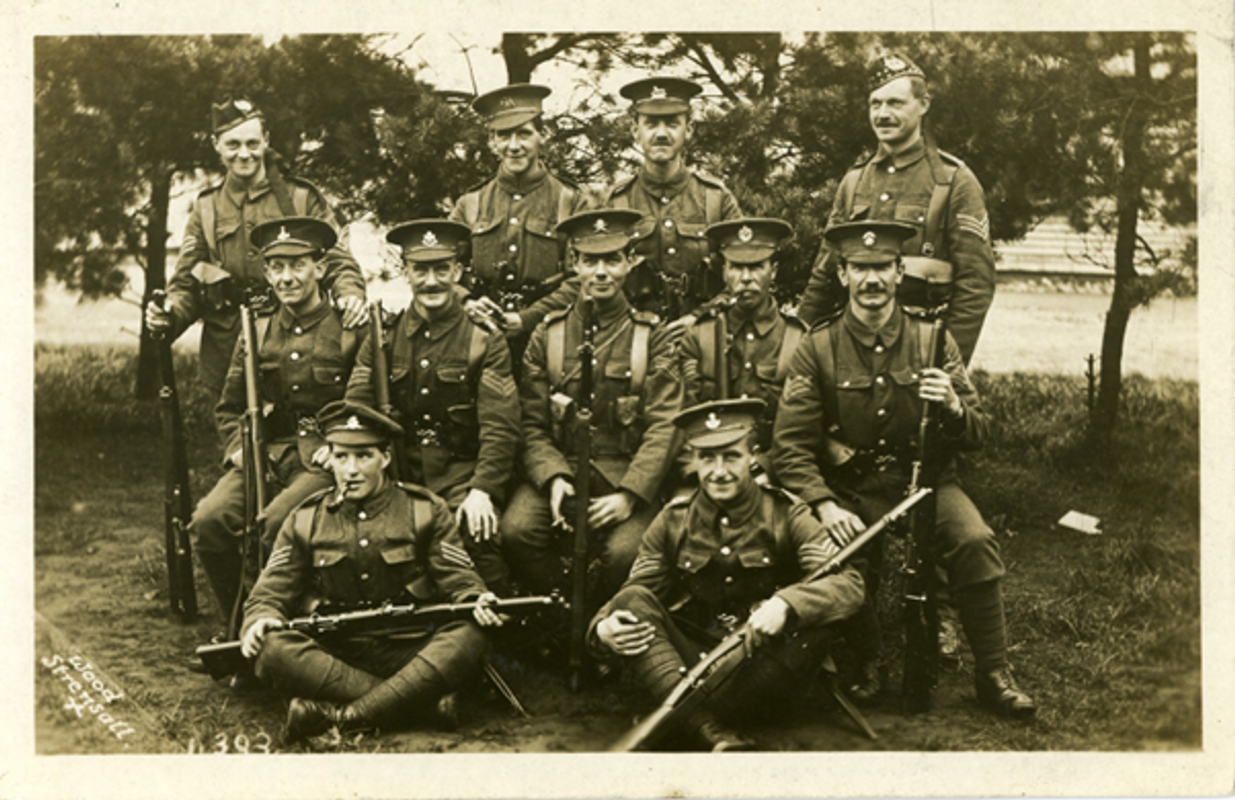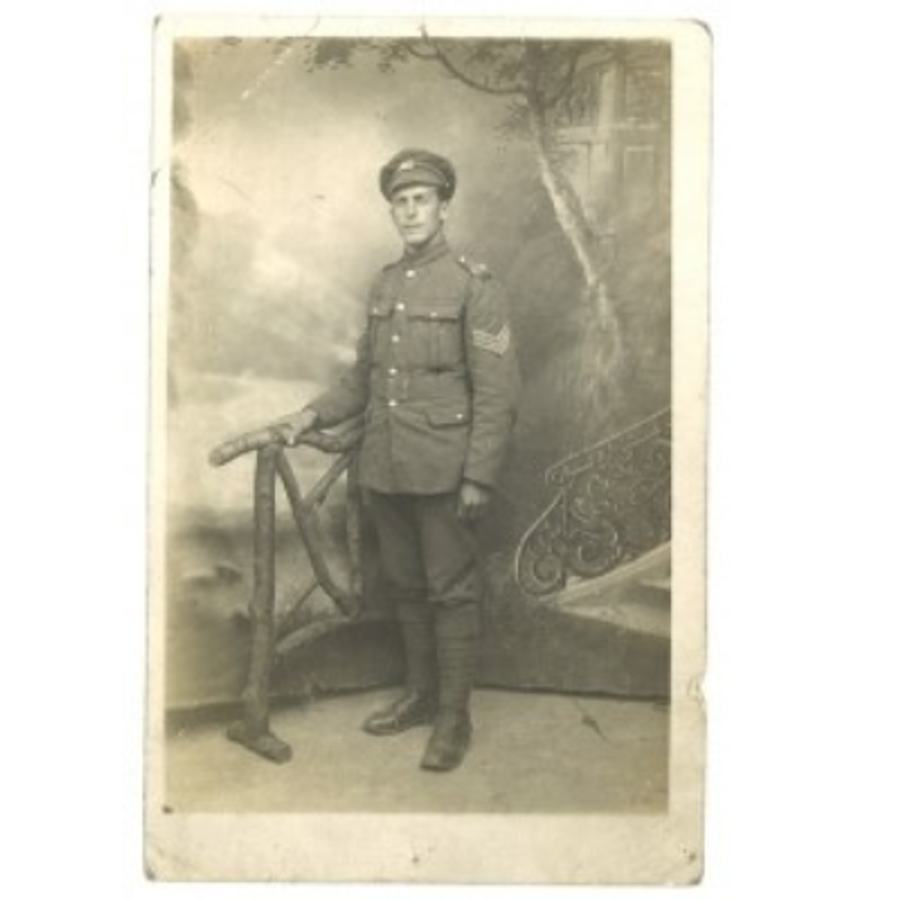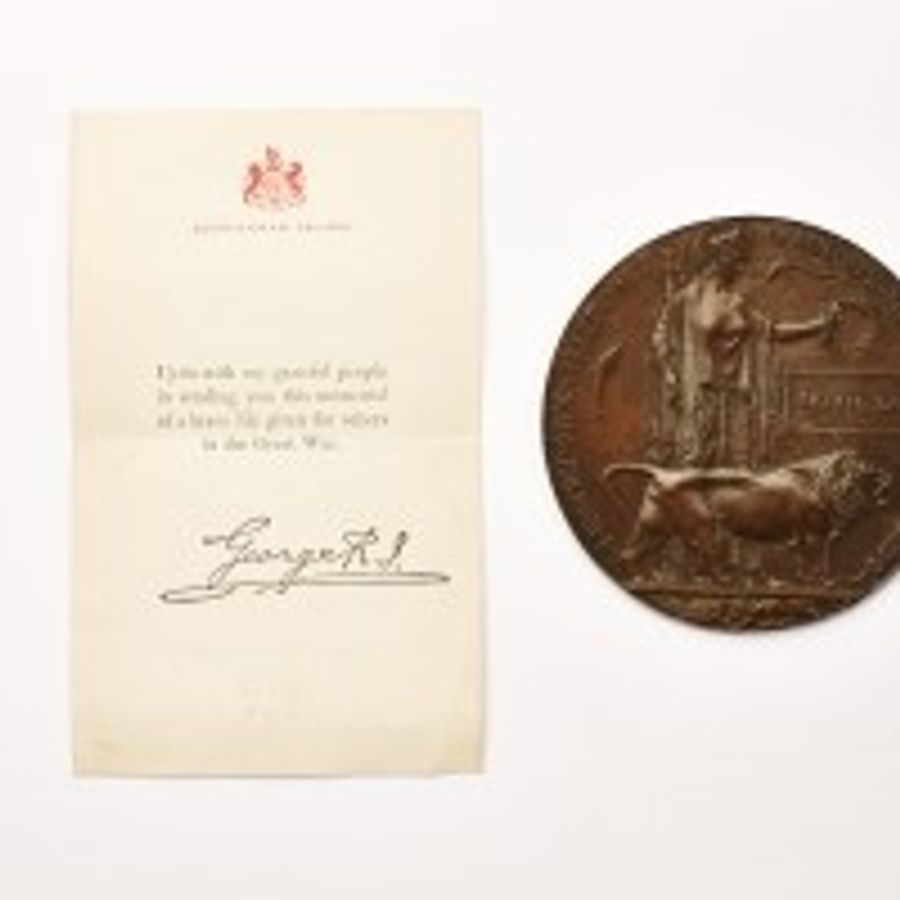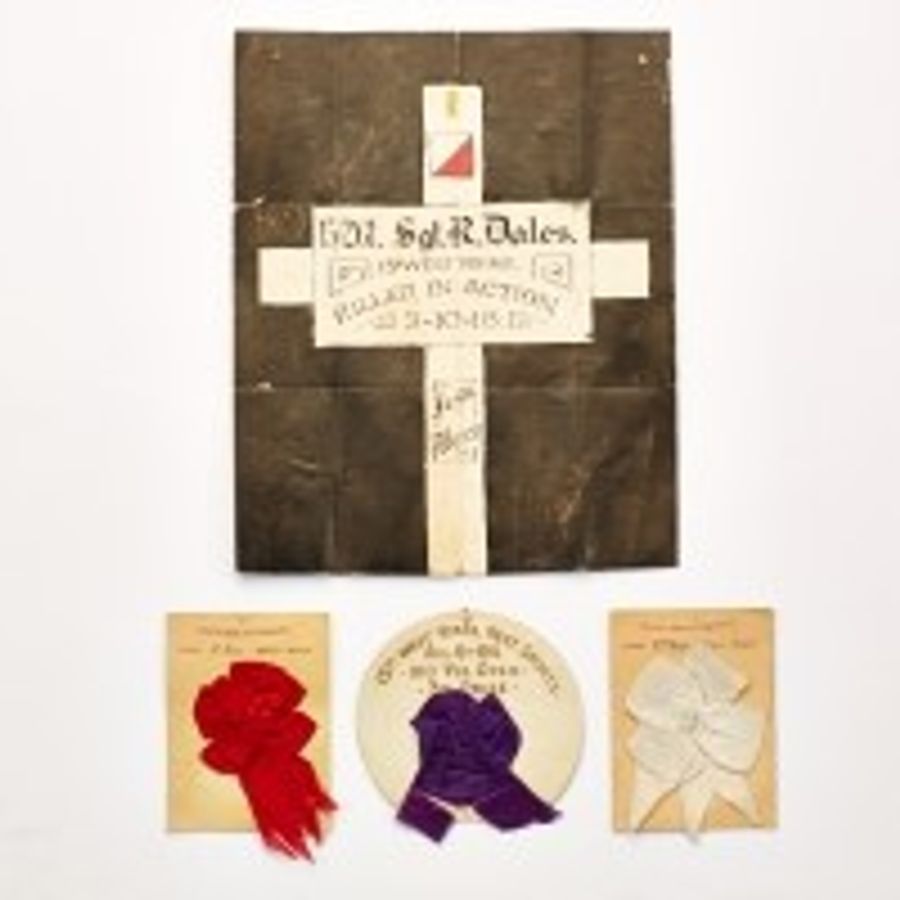
13th May 2020
In 2013 Leeds Museums and Galleries volunteers started work to examine the lives of the some of the men who went on to join the 15th Battalion (Prince of Wales Own) West Yorkshire Regiment, known by many then and now as the Leeds Pals. The group started work on Leeds Museums and Galleries’ collections, but quickly realised their project was much wider.
Peter Taylor, one of the volunteers, shares some of the lives he and the team have researched:
“At a time when we are thinking about communities and identity, the lives of Arthur Eschle and Leonard Baruxaki are interesting.
Arthur was born in Aberdare in 1881, the ninth of the eleven children of Felix Eschle, a German clockmaker, and his Welsh wife Hannah. He went to school in France, yet when the First World War broke out he was quick to enlist as volunteer number 312. He may have volunteered before, at the time of the South African War, but the records are missing. Despite his maturity and academic background – having worked as a teacher – he never received any promotion, something his family put down to his having a German father. Had he lived it might have been different. After marrying Bertha Fuller in August 1915 he joined the Pals in France, and was one of the men who went over the top on 1 July 1916. Sadly he was also one of the many who did not return. His body was found later and buried in Serre Road Cemetery No.1. What happened on that day is not now known, but he was subsequently awarded the Military Medal for bravery.
Leonard Baruxaki was of Greek origin. He was born in Buxton, Derbyshire in 1896, the son of A.D. Baruxaki, a Greek shipping agent. Of his mother I have found no trace, and he seems to have been brought up initially by a family called Hawkes in Churchdown, Gloucestershire. Later he lived with his uncle and aunt, Walter and Jane Pettigrew, in Chapeltown. His father, meanwhile, spent a lot of time travelling between Liverpool and West Africa on business. In 1913 Leonard was at Leeds University, studying engineering, where he also joined the Officer Training Corps.
When war started Leonard was one of the first to volunteer, and was number 80 on the list. He was put into the battalion machine gun section, and on 30 June 1916 he transferred to the Machine Gun Corps, an action which may have saved his life, and certainly saved him from taking part in the first day of the Battle of the Somme. In October 1918 he was commissioned into the Tank Corps where he saw out the rest of the war.
After the war he changed his name to Leonard Barry and worked as an electrical engineer, though it seems he later became a confectionary dealer and lived in Devon.”
Neither of these men made their way into the collection at Leeds Museums & Galleries, but that doesn’t mean we shouldn’t remember their place in Leeds history. However, several families did leave medals, certificates, trophies and rosettes to our collection, including the family of Richard Dales.
Richard Dales was born in Louth, Lincolnshire, on 28 November 1895, the fourth child and second son of Samuel Dales and Susannah Parrish, who had married in Louth in 1888. Father Samuel’s occupation in 1891 was a butcher, but by 1901 he had changed professions and was a cellarman. Richard did not follow either of these occupations, being listed in 1911 as a dentist’s assistant. For the whole of this period the family was living in Queen Street, Louth, and what brought Richard to Leeds we don’t know.
Richard was a very early volunteer, putting his name down on 4 September 1914 and being given the number 261. After his training he was posted to A Company, 2nd Platoon, where he became the bugler for No. 4 Section. He will have done his training at Colsterdale, then Ripon and Fovant, before serving with them in Egypt.
Two things are known about Richard’s time in the Pals. One is that he was good at sports. Several prize rosettes are preserved among his effects, which he had won for running in 1918, but he is also noted in the Battalion War Diaries as having won a First Prize in 1917 at the Horse Show. The other noted fact is that he was a good soldier, promoted to Lance Corporal by 1917, and recorded as such when admitted to No.3 Casualty Clearing Station with a gunshot wound on 9 January. On 3 August 1918 he was awarded a wound stripe: he was a Corporal by this time and reached the rank of Sergeant before his death.
Richard almost made it through to the end of the war. In October of 1918 the Allies were advancing on all fronts, and it was only a matter of time before the war ended. The Germans were retreating before them but still fighting hard, and men were being killed right up to the last few minutes of the fighting. On 3 October Richard became one of those casualties, and was buried in Underhill Cemetery, Hainaut, Belgium. He was awarded the 1914-15 Star, the British War Medal and the Victory Medal. These were sent to his family, along with his Death Plaque, and a paper cross made by a friend in his memory.
By Peter Taylor and the Leeds Pals Volunteers



